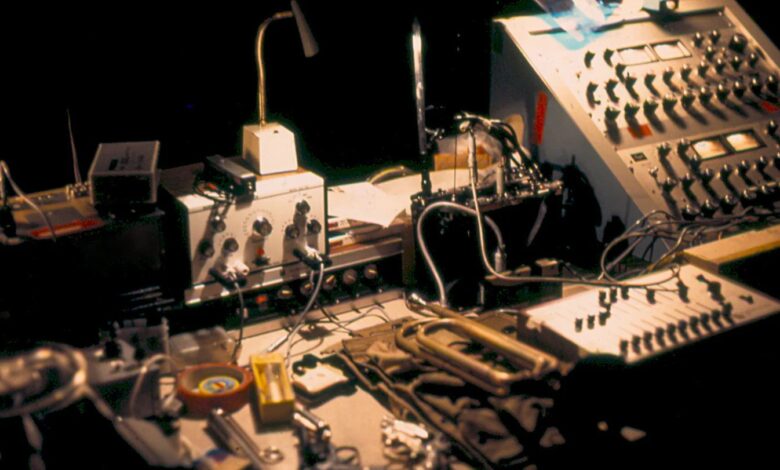The Advantages of Electroacoustic in Post-Sound Production

Introduction
In the realm of post-sound production, electroacoustic techniques and technologies have emerged as powerful tools for sound designers, audio engineers, and filmmakers. Electroacoustic refers to the manipulation and synthesis of sound through electronic means, combining elements of both electricity and acoustics. In this discourse, we will explore the advantages and applications of electroacoustic in post-sound production, highlighting its ability to enhance creativity, expand sonic possibilities, and create immersive auditory experiences.
Enhanced Creativity and Artistic Expression
Electroacoustic techniques offer unprecedented freedom in manipulating and transforming sound. Takayuki Watanabe, a music researcher wrote about the smooth frequency response effect of the electroacoustic process, stating, “Through processes such as sampling, time-stretching, pitch-shifting, and granular synthesis, sound designers can reshape and manipulate audio recordings in ways that were previously unimaginable.” This allows for the creation of unique and imaginative soundscapes, enabling sound designers to push the boundaries of creativity and artistic expression.
Electroacoustic tools provide a vast sonic playground for experimentation. Sound designers can explore unconventional sound sources, use unconventional recording techniques, and apply various signal processing methods to create entirely new sounds. This experimentation can lead to the discovery of innovative auditory elements that add depth, richness, and intrigue to the post-sound production process.
Expanded Sonic Possibilities:
Electroacoustic techniques have revolutionized sound design for fantasy and science fiction genres. By manipulating existing sounds or creating entirely new ones, sound designers can bring to life otherworldly creatures, futuristic technologies, and magical realms. Electroacoustic tools enable the creation of unique and fantastical soundscapes that transport audiences to imaginative and immersive worlds.
Electroacoustic processing allows for the creation of intricate and immersive soundscapes that enhance the overall atmosphere of a scene.While expatiating on the ambiance and atmosphere that electroacoustic processing brings, Howard Mathews, a guitarist and music aficionado, stated, “By combining multiple layers of sound, applying reverberation, and utilizing spatialization techniques, sound designers can create a sense of depth, realism, and dimensionality.” This attention to ambient and atmospheric details contributes to the overall emotional impact and storytelling of a film or audio production.
Seamless Integration with Visual Elements
Electroacoustic tools enable precise synchronization of sound with visual elements. By manipulating the tempo, timing, and rhythm of sound, audio can be seamlessly integrated with on-screen actions, dialogue, and visual effects. This synchronization enhances the coherence and impact of audiovisual storytelling, creating a more immersive and engaging experience for the audience.
In post-sound production, electroacoustic techniques are widely used for Foley and sound effects creation. Foley artists rely on electroacoustic tools to reproduce and enhance realistic sounds that complement the visual actions on screen. From footsteps to environmental sounds, electroacoustic processing helps to achieve a high level of sonic fidelity and synchronization, enriching the overall audio experience.
Efficiency and Flexibility
Electroacoustic techniques streamline the post-sound production workflow, saving time and effort. Through the use of digital audio workstations (DAWs), sound designers can efficiently organize, edit, and manipulate sound files. The ability to automate processes, batch process audio files, and non-destructively edit sound allows for greater efficiency in the post-sound production process.
Electroacoustic tools provide flexibility in sound editing and revisions. Sound designers can easily make adjustments, apply effects, and experiment with different sonic elements without the limitations of traditional analog methods. This flexibility facilitates collaboration, enables quick iterations, and allows for creative refinements during the post-sound production process.
Accessibility and Reproducibility
Electroacoustic tools offer cost-effective solutions for post-sound production. Unlike traditional analog equipment, which can be expensive and require specialized maintenance, digital tools and software are more accessible and affordable. This accessibility democratizes the post-sound production process, allowing sound designers with limited resources to achieve professional-quality results.
Digital electroacoustic techniques ensure reproducibility and consistency in sound production. Presets, templates, and software settings can be saved and shared, ensuring that sound elements remain consistent throughout a project or across different projects. This consistency contributes to the overall cohesiveness and quality of the audio production.
Potential Future Advancements in Electroacoustic Technology for Post-Sound Production
Electroacoustic technology has already made significant advancements in the field of post-sound production, revolutionizing the way sound is manipulated, designed, and integrated into audiovisual projects. As technology continues to evolve, there are several potential future advancements that could further enhance the capabilities of electroacoustic technology in post-sound production. Here are some possibilities:
1. Artificial Intelligence (AI) Integration:
The integration of artificial intelligence (AI) has the potential to revolutionize post-sound production. AI algorithms can analyze vast amounts of audio data, recognize patterns, and make intelligent decisions regarding sound processing, mixing, and design. AI-powered tools could assist sound designers in automating routine tasks, generating sound effects or ambience, and even making creative suggestions based on the desired emotional impact of a scene. This integration of AI could significantly speed up the post-sound production process and expand the creative possibilities for sound designers.
2. Advanced Spatial Audio Techniques:
Spatial audio techniques, such as surround sound and object-based audio, have already been widely used in post-sound production. However, future advancements could bring even more immersive and realistic sound experiences. Technologies like 3D audio, binaural rendering, and ambisonics could become more accessible and refined, allowing sound designers to create highly detailed and accurate spatial soundscapes. This would enhance the sense of presence and immersion for the audience, making the audiovisual experience more captivating and realistic.
3. Real-Time Processing and Mixing:
Currently, much of the post-sound production workflow involves offline processing and mixing of audio. However, future advancements may enable real-time processing and mixing capabilities. This would allow sound designers to manipulate and mix audio in real time, providing instant feedback and making it easier to experiment and iterate on sound designs. Real-time processing and mixing could also facilitate live performances or interactive audio experiences, where sound is generated and mixed dynamically based on user interactions or environmental conditions.
Conclusion
The advantages of electroacoustic in post-sound production are manifold. From enhanced creativity and expanded sonic possibilities to seamless integration with visual elements and improved workflow efficiency, electroacoustic techniques and technologies have transformed the way sound designers approach their craft. By harnessing the power of electronics and acoustics, sound designers can create immersive auditory experiences, push creative boundaries, and elevate the storytelling impact of films, games, and other audiovisual productions. As technology continues to advance, the potential for electroacoustic in post-sound production will only grow, offering new avenues for artistic expressionand innovation in the realm of audio production.



